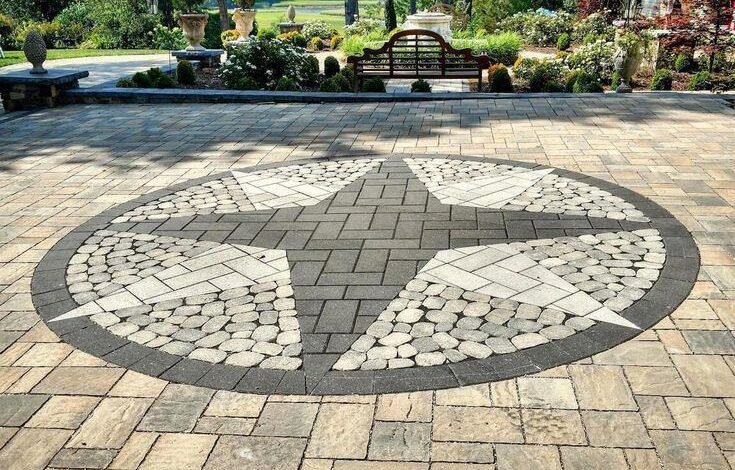
When it comes to surfacing your driveway or creating paths around your garden, choosing the right material is crucial. Two popular options are paving and gravel. Each offers unique benefits, but the best choice depends on your specific needs, budget, and preferences. To help you decide which option suits your home, let’s dive into a detailed comparison of paving and gravel.
Looking for expert paving services? Check out pavers in Dorset for professional advice and top-quality installations that enhance your outdoor spaces.
1. Aesthetic Appeal: How Do They Compare?
- Paving: Paved surfaces offer a sleek and structured appearance. With various styles, materials, and colours available, you can customise paving to match your home’s architectural style. Pavers also give your driveway or walkway a more polished look.
- Gravel: Gravel creates a rustic, natural aesthetic that works well for countryside homes or informal garden paths. It has a charm of its own, but it doesn’t offer the same refined look as paving.
2. Installation Time and Process
- Paving: Installing a paved surface requires time and expertise. The process involves preparing the ground, laying a stable base, and positioning the pavers accurately. While it takes longer to install, the results are precise and long-lasting.
- Gravel: Gravel is quicker to lay, making it a good option if you need a surface completed quickly. It requires less preparation, and gravel can be spread directly onto a stable surface. However, it may need topping up over time as stones shift or scatter.
3. Maintenance Requirements
- Paving: Paved surfaces are relatively low maintenance. Occasional cleaning and resealing will keep them looking fresh. Repairs are straightforward, as individual pavers can be replaced if they become damaged.
- Gravel: Gravel requires more maintenance to keep it in place and looking neat. You’ll need to rake it regularly to prevent uneven spots and weeds. Over time, additional gravel may be required to maintain the surface.
4. Cost Comparison
- Paving: Paved surfaces have higher upfront costs due to materials and labour. However, their long lifespan and durability make them a worthwhile investment for many homeowners.
- Gravel: Gravel is more affordable initially, making it an appealing option for budget-conscious projects. While it may require occasional replenishing, it still tends to be cheaper overall.
5. Durability and Lifespan
- Paving: Paving is known for its durability. When installed correctly, it can last for decades, resisting heavy traffic and weather conditions.
- Gravel: Gravel surfaces don’t last as long as paving, especially in areas with heavy foot or vehicle traffic. However, with regular upkeep, gravel can still provide years of use.
6. Weather Resistance
- Paving: Paving holds up well in most weather conditions. It resists rain and sun exposure without significant damage. However, extreme temperature changes can sometimes cause cracks.
- Gravel: Gravel performs well in various weather conditions, as it allows water to drain easily and prevents pooling. However, heavy rain or strong winds can shift the stones, requiring maintenance.
7. Safety and Accessibility
- Paving: Paved surfaces are smooth and even, making them ideal for accessibility. They are safer to walk on, especially for children, elderly individuals, or those using mobility aids.
- Gravel: Gravel can be difficult to walk on, especially for people with mobility issues. It can also become slippery, increasing the risk of falls, particularly in wet weather.
8. Eco-Friendliness and Drainage
- Paving: Permeable paving solutions are available to allow water to drain through, reducing runoff and helping the environment. However, traditional paving may require additional drainage solutions.
- Gravel: Gravel is naturally permeable, allowing water to drain through easily. This makes it an eco-friendly option that helps prevent flooding and water buildup.
9. Noise Levels and Comfort
- Paving: Paved surfaces are quieter to walk and drive on, creating a smoother experience. They also feel more comfortable underfoot, which is beneficial for outdoor living areas.
- Gravel: Gravel can create noise when walked or driven on, which may be a disadvantage for some homeowners. However, some people appreciate the crunch of gravel underfoot as a charming feature.
10. Which Option is Right for You?
The choice between paving and gravel depends on your priorities. If you value aesthetics, durability, and low maintenance, paving is the better option. It provides a refined look and requires minimal upkeep over the years. On the other hand, if you’re working with a tighter budget or prefer a rustic, natural feel, gravel may suit your needs better. It’s also a good choice for areas where water drainage is a concern.
Conclusion
Both paving and gravel offer unique advantages, so the right choice ultimately depends on your preferences and the specific requirements of your project. Paving provides a long-lasting, elegant finish that adds value to your home, while gravel offers affordability and natural charm.
For expert guidance and installation, connect with pavers in Dorset. Whether you choose paving or gravel, their professional services ensure your driveway or pathway enhances the beauty and functionality of your outdoor space.



